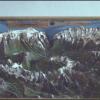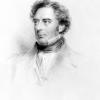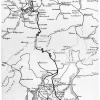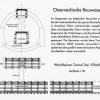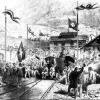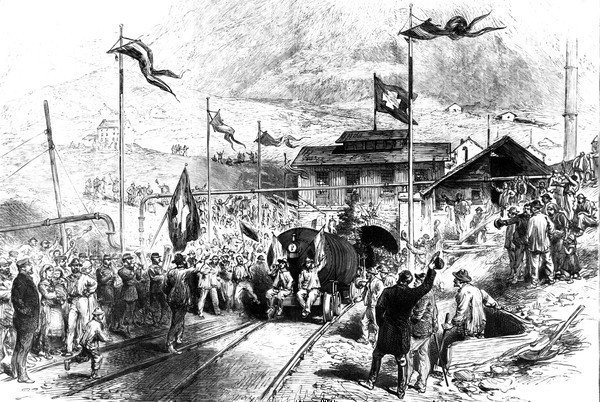Making ends meet: Opening of the Gotthard tunnel
On February 29, 1880, an announcement was made to the world via telegraph that a breakthrough had taken place at the Gotthard Tunnel.
"Live" images and reports were soon printed all over Europe. Deep in the tunnel, a German-speaking and an Italian-speaking engineer embraced through the bore hole between the north and south sides. Workers were issued with special commemorative medals with the date on one side, with the Latin inscription "Germania–Helvetica–Italia: viribus unitis" (Germany–Switzerland–Italy: men united). Two years later, the tunnel was finally opened, in yet another widely reported event, where dignitaries traveled in a ceremonial train from Lucerne to Milan.
The flags of the three nations – none of which had existed when the first Alpine railway tunnel was started – filled the streets of Lucerne and festooned the trains that brought the ceremony's dignitaries to Milan. The work of engineering was touted primarily as a work of peace that would bring the young nations together. The President of the Swiss Federal Council, Simeon Bavier announced that the hole that had passed through the 'old wall' of the Alps let a breeze of the 'Springtime of the nations' blow through.
With all of its international splendor, it was a much-needed moment of optimism for Swiss railways. In the years running up to the event, a lot of railway development in the country had stopped and some railway companies had gone bankrupt.
 Previous Story
Next Story
Previous Story
Next Story
How to cite this page
Alexander Badenoch, 'Making ends meet: Opening of the Gotthard tunnel', Inventing Europe, http://www.inventingeurope.eu/story/making-ends-meet-opening-of-the-gotthard-tunnel
Sources
- Schueler, Judith. Materialising Identity: The Co-Construction of the Gotthard Railway and Swiss National Identity. Amsterdam: Aksant, 2008





